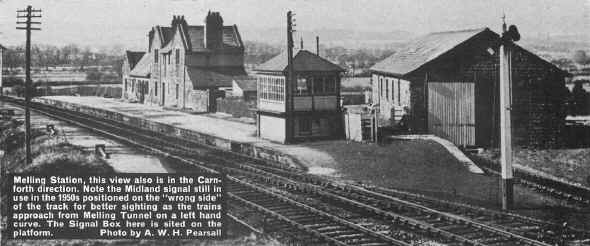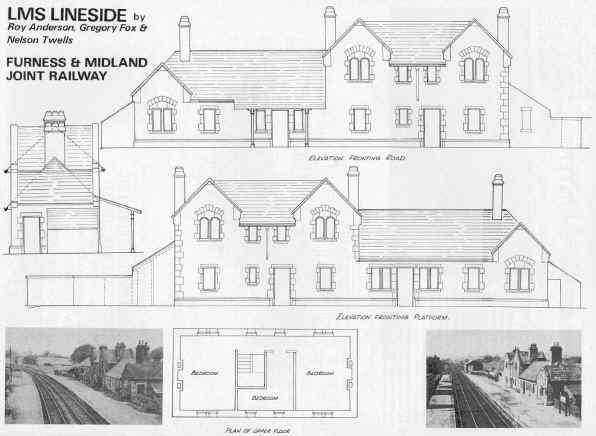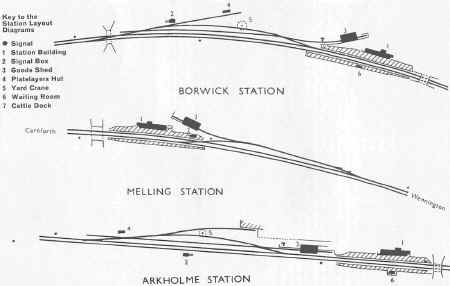It was not for another year that the line made direct
connection with the Furness railway having for that period terminated at a temporary
station at the site of Carnforth East Junction. When end on connection with the Furness
was made in July 1868 another station was opened at Carnforth West Junction which remained
in use until a loop line was laid from Carnforth East Junction and brought into use at the
same time as the new joint MR/FR/LNWR Carnforth Station in August 1880.

Three ton Midland Yard Crane at Arkholme |
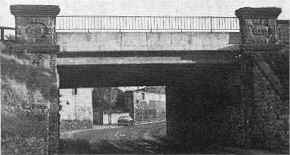
Although sporting new decking this bridge at Carnforth
clearly shows its ancestry, F & M 1880 |
Three intermediate stations were built on the joint line at Borwick,
Arkholme and Melling. The principle engineering difficulties were the construction of two
long viaducts over the Lune Valley with a total of 13 arches and Melling Tunnel 1,230
yards along. The Midland were responsible for signalling whilst the Furness maintained the
line. A locomotive shed was provided by the Midland Railway to the east of Carnforth
originally conceived as a galvanised iron structure for four engines; this developed into
a large shed which remained in use until 1944, when the new LMS shed at Carnforth was
fully operational.
The three station buildings were of similar design to a general Furness pattern using
stone throughout, Borwick and Arkholme being identical with Melling a mirror image. The
large two-storey Stationmaster's house had single storey passenger facilities to one side.
From 1868 the Midland Railway's services to Belfast and the Isle of Man were
transferred from Morecambe Harbor to Piel Pier at Barrow which brought the Midlands'
boat-train services over the joint line, a situation which was to continue until the
opening of Heysham Harbour in 1904 when much of the traffic reverted to its original route
from Wennington through Lancaster. During this period the Furness Railways' Ramsden Dock
complex had been completed and so Piel Pier fell into disuse. In addition summer
excursions from Midland Railway centres such as Leeds and Sheffield to the Lake District
passed over the F & M.
Trains between Leeds and Barrow or Whitehaven continued to operate, many being
expresses some of which when travelling towards Leeds could stop to pick up passengers
travelling to destination beyond Leeds. Local services were not very frequent, in 1903 the
Midland had four stopping trains each way on weekdays and two on Sunday, in 1937 the LMS
had six trains to Carnforth and seven to Wennington with two each way on Sunday.
The services were severely reduced during the wartime period to two each way, BR
increased the number of trains again and in 1958 five were running to Carnforth and six to
Wennington.
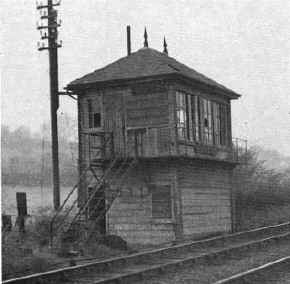
Midland Signal Box of the type used at each station. This
one at Arkholme exhibits both Midland and LMS standard nameboards |
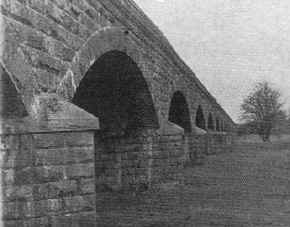
Part of the Lune viaduct. The parapet bows rather badly |
Throughout the period it was customary for some of the trains to be
split or joined at Wennington with services to or from Morecambe and Leeds or Bradford.
Others were local trains only between Carnforth and Wennington. Even the regular local
services were not all scheduled to stop all the three stations. Melling was the least well
served and indeed closed to passenger traffic in 1952, whilst the other two
continued in use until 1960 when all the facilities were removed from all the stations.
the line however continues in use carrying Leeds to Morecambe traffic, the Wennington to
Morecambe line having been removed except for a short spur to Lancaster Power Station.
The joint line was used extensively for mineral and coal traffic between Barrow and
Leeds, but only one or two pick-up goods trains operated daily starting from Carnforth end
of the line.
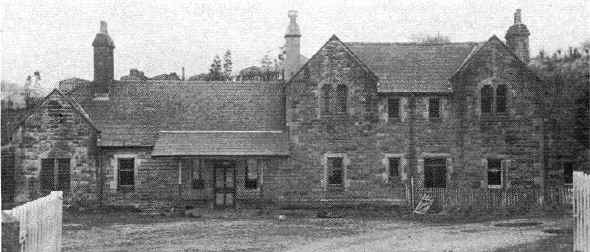
Roadside view of Arkholme Station to show the full front
elevation. The stationmaster's garden is fenced off from the yard
|
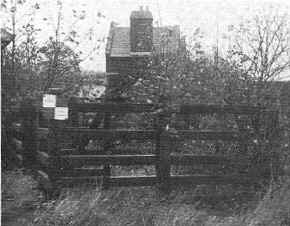
Details of the cattle dock at Borwick, quite a small
affair between the end of the station platform and the goods shed road. |

This old coach of undetermined origin served as
platelayers hut at Borwick |
Each station had a similar layout as can be seen in the diagrams.
Borwick was the most extensive as there was ample flat ground, Arkholme was more condensed
being situated within a slight cutting. Melling however was built on the shelf formed
between the end of the embankment from the Lune Viaduct and the severe cutting leading to
Melling Tunnel, this probably accounts for the poorer facilities and indirectly to
less traffic. There was no cattle dock and no yard crane, only the small crane within the
goods shed.
The signalling at each station was controlled from a Midland Signal Box of the
"middle period" design. There were no other intermediate signal boxes along the
line
The main drawing is illustrative of Borwick or Arkholme
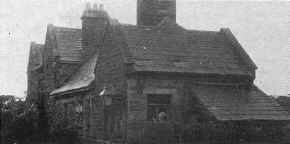
End detail at Borwick |

The other end ! The Hawkeseye nameboards are here
attached directly to the wall without any backing. |

Borwick goods shed. Similar sheds were sited at each
station.
|

Detail of entrance awning at Melling.
|

The Midland Engine Shed at Carnforth, now given over to
industrial use.
|
|
